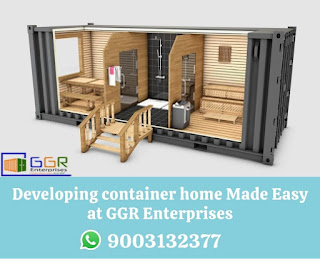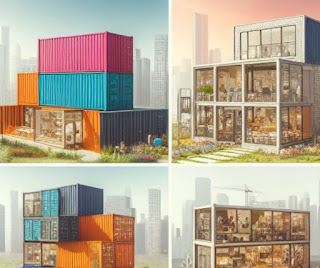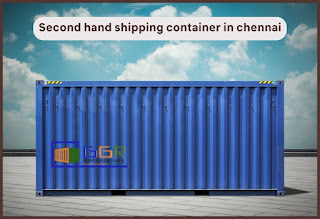Second-Hand Shipping Containers: Considerations
Living in a second-hand shipping container home has gained attention for its eco-friendly appeal and unique design possibilities. However, before embarking on this alternative housing journey, it's crucial to understand the nuances and potential drawbacks that come with repurposing these containers.
Thermal Challenges:
While shipping containers offer sturdy structural support, they struggle with temperature control. Metal conducts heat and cold, demanding extensive insulation to maintain a comfortable indoor environment. This necessitates additional construction for insulation, impacting both the exterior appearance and interior space.
Recycling and Sustainability:
Despite being recyclable, repurposing containers for homes might not be the most sustainable choice. Extracting and processing metal demand substantial energy, and reusing containers doesn't necessarily prevent them from ending up in landfills. It's essential to weigh the ecological footprint of using metal in home construction against its recycling benefits.
Toxicity Concerns:
Containers often contain traces of hazardous substances like lead-based paint or chemicals from their previous usage. This raises health concerns, urging many builders to prefer new containers over older ones to avoid potential toxicity risks.
Spatial Limitations:
The inherent narrowness of shipping containers, coupled with the need for insulation and HVAC systems, significantly reduces usable interior space. Meeting standard room height requirements further limits available space, constraining design options and room dimensions.
Structural Adaptations:
While containers boast robust corner structures, modifications such as cutting openings for doors and windows compromise their integrity. Additional structural support becomes necessary, potentially escalating construction costs and complexity.
Considering these factors, while second-hand shipping containers offer a novel housing solution, they present challenges that may not align with the requirements of a comfortable, long-term residence. However, they could serve as interim shelters or temporary housing solutions.
When contemplating a second-hand shipping container home, it's crucial to weigh these aspects against your housing needs and sustainability goals. While they may not be the ideal choice for a permanent residence, their adaptability and structural strength make them suitable for specific short-term purposes or innovative architectural projects.
Remember, while these containers possess unique characteristics, they might not always be the most practical option for a long-term, comfortable living space.
When considering a second-hand shipping container for a new home, thoroughly assess its limitations and consider whether they align with your vision and requirements for a sustainable, comfortable living space.




Comments
Post a Comment